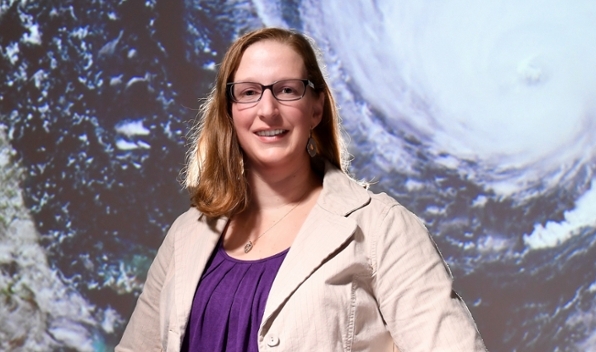Rowan research: despite official warnings, many U.S. cities not preparing for extreme sea level rise
Rowan research: despite official warnings, many U.S. cities not preparing for extreme sea level rise

Despite persistent scientific warnings about possibly severe sea level rise due to climate change, as well as dramatic footage of arctic and Antarctic ice shelves collapsing and adding to rising sea levels, the leaders of many U.S. coastal communities may be failing to plan for worst-case scenarios.
In fact, according to recently published research led by Dr. Andra Garner, a climate scientist at Rowan University, more than half of U.S. coastal communities may be underestimating warnings about sea-level rise. The study, published in the journal Earth’s Future, further showed that there are virtually no long-term projections (beyond 2100) of sea level rise from coastal communities in the American south.
Garner, the principal investigator in the study of sea level rise assessment reports across the U.S., published “Evaluating Knowledge Gaps in Sea-Level Rise Assessments from the United States,” Jan. 23.
“What it comes down to is more than half of our coastal locations aren’t adequately preparing for the type of sea-level rise that they might see in the future,” said Garner, an assistant professor of Environmental Science in the School of Earth & Environment.
By 2100, she said, worst-case sea level rise in New Jersey is predicted to be 2.5 to three meters above current mean sea level. That means, for example, that water levels observed at the coast could be up to 10 feet higher by the end of the century than it would be today.
“When we’re talking about higher ends of sea level, it’s not necessarily the most likely (scenario) but it’s something we can’t rule out,” Garner said.
Although New Jersey is relatively adept at planning for higher potential sea-level rise, she said many state and local governments are not currently planning for worst-case scenarios that align with the latest research issued by the United Nations’ Intergovernmental Panel on Climate Change (IPCC).
Already, she said, many low-lying areas along U.S. coasts, like in Miami Beach, Fla., experience a phenomenon known as “sunny day flooding” simply because of high tides.
“We can already see the impact with sunny day flooding, like beach erosion, but we really see the damage when there are coastal storms,” Garner said.
She said there could be a number of decisions made in coastal assessments that cause some to fall short of the most recent IPCC guidance, and that to ensure adherence with the latest recommendations, some locations may need to revisit assessments and make updates.
Garner also said that there is some good news.
“One positive thing is that, while we have a lot of locations (whose planners) are not in line with the most extreme scenarios, we have a lot that are,” she said.
Which may provide some hope for the future.
“Given that some locations are doing really well with planning, and that the new IPCC data is easily accessible through public websites like one from , there are some good roadmaps for how locations that might currently be underestimating sea-level rise could improve in the future.”